The image of the grief-stricken Kojo McPherson Sr as he mourned the sudden and tragic death of his 13-year-old son is one that many cannot erase from their minds. He remembers his boy as his “shining armour” but a speeding driver claimed he mistook him for a “dog” last Sunday on the railway embankment at Paradise, and he was struck down.
So severe were the lad’s injuries that his father described seeing a mangled body lying on the roadway with severe head injuries. It was an end to the life of a “bright” youngster who was his father’s pride and joy and whose dream was to become a civil engineer. The President’s College student, Kojo McPherson Jr, became the 11th person to be killed on the country’s roadways since December 23, while well over 100 have died during 2014.
The pain of the father is something all too familiar to Denise Dias who lost her daughter Alecia 19 years ago, and who has been fighting for safer roadways ever since. Instead of a reduction in the number of road deaths, however, she has seen relative after relative mourn the death of their loved ones. Through the Alecia Foundation and Mothers in Black Dias has teamed up with countless grieving women as they fight to prevent yet another parent feeling the pain of their child being cruelly taken on the country’s roads. Apart from the grief endured by the families, road accidents have also been a huge burden on the country’s health sector.
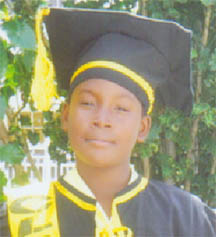
She described the carnage on the roads as reaching “epidemic proportions, leapfrogging all other diseases and murders.”
The police reported recently as of the end of November there had been some 130 road fatalities from 121 accidents compared to 100 from 92 accidents for the same period in 2013, reflecting a 32% increase.
Speed and alcohol have been the major contributing factors to the road fatalities according to Traffic Chief Hugh Dehnert, who told Sunday Stabroek that the Police Force is very concerned about the upsurge in road deaths.
In recent times the force has embarked upon a campaign of ‘naming and shaming’ drivers caught driving under the influence by publishing their photographs and names in the media. This, according to the Traffic Chief, is aimed at deterring other drivers from driving intoxicated.
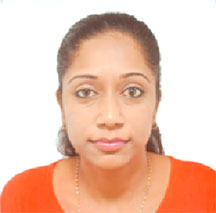
“We think it would make an impact to name and shame those drivers because any sober minded person would not want to have their photographs published in the papers and bring shame to them,” he told this newspaper.
He said the strategy was adopted in the hope that it would serve as a deterrent to other drivers, although it was too soon to ascertain whether this is really the case. He explained that the move is intended as a warning to drivers that police are out there, and once they are caught driving under the influence they would be named and shamed.
However, Dias when asked about this strategy, observed that only the poor would be affected because those who have money would pay their way out.
“Only poor people would be affected; it is all to do with the economy of the country. It could be a deterrent to some… [but] others would just pay more and there is nothing in place to stop this,” she said.
And human rights activist Sherlina Nageer believes that those in uniform need to first desist from drinking and driving themselves before they can effectively tackle the issue. Describing the mounting number of
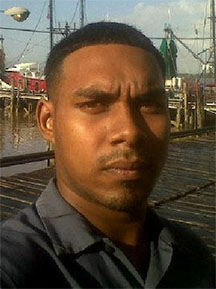
road deaths as “terrifying” Nageer said the police condone the lawlessness on the roads and are “drinking and driving on the job,” as some are seen accepting alcoholic beverages from drivers who are stopped for traffic offences.
“They need to change their own culture before they try to change the general public’s – hold themselves accountable,” she remarked.
For her those in authority don’t really care about what is happening on the roads because while pedestrians are afraid to walk on the roads, they are driving and are not afraid of being knocked down. Some in authority also, she said, like Minister of Finance Dr Ashni Singh can crash into another vehicle while believed to be under the influence and drive away and then later pay their way out, so “it is not really a problem.”
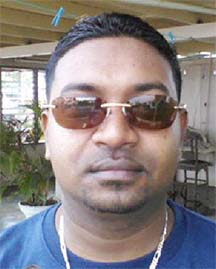
“It is just waste of life,” she said of the road deaths, adding that it is “people who have so much to offer” who are the ones who are being killed. But there seems to be a culture that life is cheap, “so I guh do what I want to do.” Nageer believes that there is need for a better remedy to deter people from being reckless on the roadways while calling for stronger legislation as the fine for drinking and driving is $7,500, while in other countries it could cost the driver his/her licence.
‘Crisis’
A concerned Dias said that the figure of 10 to 12 road deaths in the period December 23-30 last year is catastrophic, and Guyanese need to know that it is a crisis, but still the political leaders, business executives, religious leaders, the public in general and even the media “tend to place these road deaths and road injuries on the back-burner.”
“Before this epidemic expands, dramatic action is needed to protect all road users, particularly those most vulnerable…our children,” she told this newspaper.
According to Dias the challenges in data collection to actually quantify the burden of injury leads to under-reported cases. Road crashes, she said, are avoidable and are undermining the country’s economy and keeping hundreds of Guyanese families in constant poverty.
“Many of the road crash victims are young people, our future, we cannot allow their safety to be an afterthought,” she said.
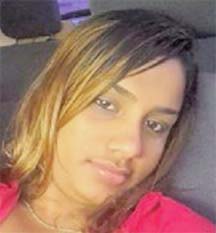
According to the road safety activist, with the
explosion in the number of imported vehicles there is need for a collective effort from the country’s elected officials, road engineers, police, educators in the schools, hospital officials and countless others.
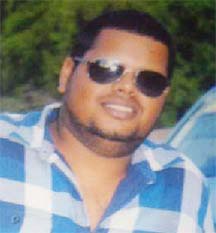
She also adverted to the necessity of having a safer public and private transport system and the strengthening of the road safety laws, while road safety education in schools should be a compulsory subject. Most of all there should be a change in road users’ behaviour. She said speeding, drinking and driving, unlit roads, overtaking on double yellow lines, and texting and talking on the phone whilst driving have surpassed driving under the influence of drugs and alcohol globally.
“Talking and texting on a phone whilst driving is against the law,” she emphasised.
There is also the allegation that many persons are driving without completing the required road licence tests, while some drivers cannot read or write yet hold a legitimate driver’s licence, Dias noted. And too often two adults with a child are seen riding a motorcycle and it is the parents who are wearing the helmets, a situation Dias described as a shame.
“Bribery and corruption is renowned throughout the police force. Appropriate action needs to be taken to address changes in our law enforcement and the judiciary,” she stated.
For her only through a concerted effort can the roads become safer for all Guyanese in every community. She said the Alicea Foundation’s passion, together with Mothers In Black is never to hear another parent receive the message that their child has been killed on our roads, though she fears that “… the New Year [will] greet me with the chilling cries of others who have just lost their loved one because of yet another ‘avoidable’ vehicle crash.”
Meantime Nageer pointed out that many persons are dying on the roadways and they are not even in a vehicle and she asked how old people and young children can use the roads with so many reckless drivers around.

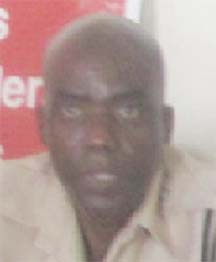
On the other hand Dias once again alluded to the fact that there is nothing in the system to teach children the road safety rules as was done in the past, and at 3pm there is usually “madness” in front of schools with children rushing on to the roads without observing the safety rules. There are also no pavements for pedestrians and roads are built too close to the houses, a situation she described as “madness.” It appears as if road engineers are using documentation from years gone by when houses were not on streets and roads were just planted “willy nilly without thinking of pedestrians.”
Apart from young McPherson those killed on the roads from December 23 to 30, 2014 were Reena Singh, Khemwattie Mohabir, Davendra Jaipaul, Veith Stephen, Cindy Singh, Richard Giddings, Pash Jienarine, Suren Mangru, Yonette Branche and Rakesh Sukdeo.





